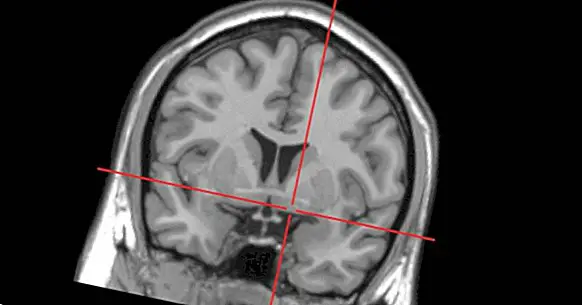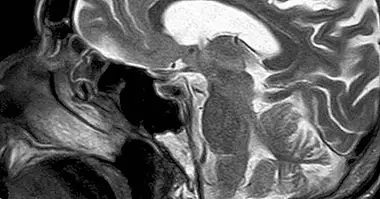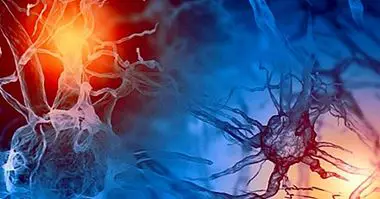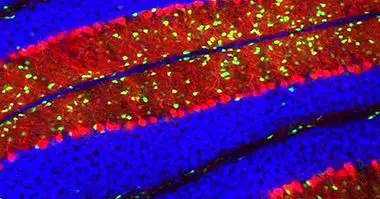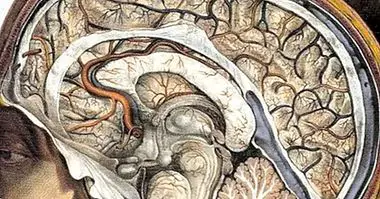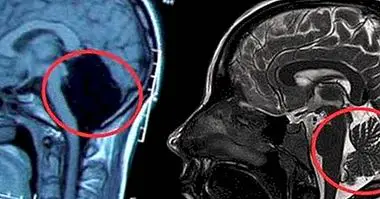Meynert's basal nucleus: what it is and what its functions are
Alzheimer's disease (AD), which is the most common form of dementia, accounts for between 60% and 70% of cases. The causes of Alzheimer's have not yet been fully found. But one of the hypotheses to explain the causes is the deficit of acetylcholine, among others, and a structure of the brain known as the basal nucleus of Meynert and the temporal lobes are the regions of greatest deficit in this aspect.
This clear biochemical abnormality was studied and associated with the disease. And not only with Alzheimer's disease, but also with Parkinson's disease where the basal nucleus undergoes degeneration.
In this article we will see what is the basal nucleus of Meynert and what we know about this part of the nervous system and its implication in the disease.
- Related article: "Parts of the human brain (and functions)"
What is the basal nucleus of Meynert?
The basal nucleus of Meynert is defined as a group of nerve cells located in the innominate substance with broad projections to the neocortex, rich in acetylcholine and choline o-acetyltransferase. His name is in tribute to the psychiatrist, neuropathologist and anatomist Theodor Meynert, who believed that alterations in brain development could be a predisposition to psychiatric illness. In addition, he argued that certain psychoses are reversible.
The basal nucleus of Meynert plays an essential role through its axons directed to the entire cortex, providing the latter the highest contribution of acetylcholine.
The release of acetylcholine in the sensory areas triggers a succession of cellular events that derive in a series of synaptic modifications . The circuit of Papez (structures that according to James Papez were related to the affective aspects of memory) and the basal nucleus of Meynert seem to be involved in a feedback process aimed at consolidating the memory and making it durable.
- You may be interested: "Acetylcholine (neurotransmitter): functions and characteristics"
The importance of acetylcholine
The importance of acetylcholine was discovered thanks to Henry Hallet Dale and Otto Loewi, who shared the Nobel Prize in physiology and medicine in 1936. Otto Loewi began his research based on a hypothesis of Elliot, who argued that the nervous impulse transmitted through a chemical substance. Loewi was able to demonstrate that in the parasympathetic nervous system this substance was mainly acetylcholine, a substance that Henry Hallet Dale had previously isolated.
Acetylcholine was the first neurotransmitter characterized both in the peripheral nervous system and in the central nervous system of mammals. Involved in the regulation of various functions, as in cortical activation, passage from sleep to wakefulness, memory processes and association .
Acetylcholine is synthesized in neurons by the enzyme choline acetyltransferase, from choline and acetyl-CoA in the synaptic cleft.
Your link with Alzheimer's
People with mild cognitive impairment show evident atrophies of Meynert's basal nucleus, brain structure from which part 80% of cholinergic neurons that facilitate a wide range of cognitive functions such as memory. It has been observed that the lesions in this area of the brain are clearer in those patients whose memory losses were more significant. By means of neuroimaging markers, early changes in the brain of people at high risk of Alzheimer's can be determined.
A study estimated that in 2006, 0.4% of the population was affected by Alzheimer's disease and that it would triple by 2050. Currently, Alzheimer's disease is incurable and terminal. However, there are pharmacological and non-pharmacological treatments that show signs of efficacy, such as anticholinesterase drugs that have an inhibitory action of cholinesterase , the enzyme responsible for breaking down acetylcholine. Tacrine, which is no longer used for its hepatotoxicity.
The available anticholinesterase drugs are donepezil (Aricept), rivastigmine (Exelon or Prometax) and galantamine (Reminyl). None of these four medications is indicated to slow or stop the progress of the disease. However, it has been warned that these drugs have some efficacy in the mild and moderate stages of the condition, but without any effect in the advanced stages.

